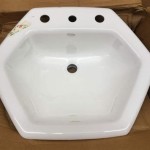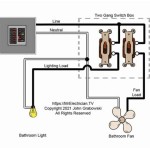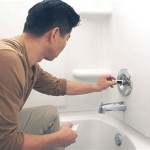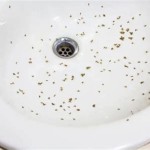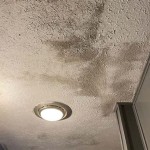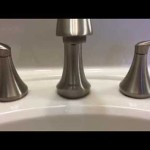Bathroom Sink Faucet Leaking From Spout: Causes, Diagnosis, and Repair
A leaking bathroom sink faucet is a common household plumbing problem that can lead to water wastage, increased water bills, and potential damage to surrounding surfaces. Identifying the source of the leak from the spout and understanding the underlying causes are crucial steps in effectively addressing the issue and preventing further complications. This article provides a comprehensive overview of the common reasons for a bathroom sink faucet leaking from the spout, methods for diagnosing the problem, and step-by-step instructions for performing necessary repairs.
Understanding Common Causes of Spout Leaks
Several components within a faucet assembly can contribute to a spout leak. The most frequent culprits include worn-out washers, O-rings, and cartridges. Mineral buildup, corrosion, and high water pressure can also accelerate the deterioration of these parts, leading to leaks. Recognizing the specific type of faucet and its internal mechanisms is essential for accurate diagnosis and appropriate repair.
Worn Washers: Washers are small, rubber or fiber discs that create a watertight seal when the faucet is turned off. Over time, these washers can become brittle, cracked, or flattened due to constant friction and pressure. This degradation compromises their ability to seal properly, resulting in a persistent drip from the spout. Older compression faucets are particularly susceptible to washer problems.
Deteriorated O-Rings: O-rings are circular rubber seals that prevent water from leaking around the faucet handle and spout. They are commonly found in cartridge and ball-type faucets. Like washers, O-rings can dry out, crack, or become deformed over time, leading to leaks. The leak may manifest as a drip from the spout or around the base of the handle.
Faulty Cartridges: Cartridge faucets use a cylindrical cartridge containing internal seals to control water flow. If the cartridge is damaged or worn, it can cause a steady drip from the spout or difficulty controlling water temperature and pressure. Cartridges are typically replaced as a single unit rather than being repaired.
Mineral Buildup: Hard water contains minerals like calcium and magnesium that can accumulate inside the faucet and around its components. This mineral buildup, also known as scale, can interfere with the proper functioning of the faucet, causing leaks and reducing water flow. Regular cleaning and the use of a water softener can help prevent mineral buildup.
Corrosion: Metal components within the faucet, particularly in older models, can corrode over time due to exposure to water and chemicals. Corrosion can weaken the faucet body, erode seals, and create pathways for water to leak from the spout. Replacing corroded parts is often the most effective solution.
High Water Pressure: Excessive water pressure can strain the faucet's internal components, accelerating wear and tear and increasing the likelihood of leaks. A pressure regulator installed on the main water line can help maintain optimal water pressure and protect plumbing fixtures.
Diagnosing the Source of the Leak
Before attempting any repairs, it is essential to accurately diagnose the source of the leak. This involves carefully observing the faucet, identifying the type of faucet, and performing a few simple tests. Taking these steps will ensure that the correct parts are replaced and that the repair is successful. Begin with a visual inspection of the faucet, noting where the water is leaking from and its frequency. Is it a constant drip, a sporadic leak, or only when the faucet is in a specific position?
Identifying the Faucet Type: Knowing the type of faucet is crucial for identifying the internal components and selecting the appropriate replacement parts. The four main types of bathroom sink faucets are compression, ball, cartridge, and ceramic disc. Compression faucets have separate hot and cold water handles that require you to turn the handle fully to stop the flow of water. Ball faucets have a single handle that moves up and down and side to side. Cartridge faucets also have a single handle that moves up and down to control the volume of water flow. Ceramic disc faucets have a single lever that moves up and down and rotates approximately 90 degrees. Each type utilizes a different mechanism to control water flow and will require different repair procedures.
Checking for Loose Connections: Inspect the connections between the faucet spout and the faucet body, as well as the connections to the water supply lines beneath the sink. Tighten any loose connections with a wrench, being careful not to overtighten and damage the fittings. A small leak from a connection point can sometimes appear to be originating from the spout.
Testing the Handles: Turn the faucet handles to different positions and observe if the leak changes. If the leak only occurs when the handle is in a specific position, it may indicate a problem with the handle assembly or the cartridge (in cartridge faucets) or ball assembly (in ball faucets).
Examining the Aerator: The aerator is the screen-like device at the end of the spout. A clogged or damaged aerator can cause water to back up and leak from the spout. Unscrew the aerator and clean it thoroughly to remove any debris or mineral deposits. If the aerator is damaged, replace it with a new one.
Step-by-Step Repair Procedures
Once the source of the leak has been identified, the next step is to perform the necessary repairs. The specific repair procedure will depend on the type of faucet and the component that is causing the leak. Before starting any repairs, it is essential to turn off the water supply to the faucet. This is typically done by closing the shut-off valves located under the sink. If there are no shut-off valves, you will need to turn off the main water supply to the house.
Repairing a Compression Faucet Leak: Compression faucets are the oldest and simplest type of faucet. To repair a leak from the spout of a compression faucet, you will typically need to replace the washers. First, shut off the water supply and remove the handle. You may need to pry off a decorative cap to access the screw that holds the handle in place. Next, unscrew the stem assembly and remove the old washer. Replace the washer with a new one of the same size and shape. Inspect the valve seat for any damage or corrosion. If necessary, use a valve seat wrench to resurface or replace the valve seat. Reassemble the faucet in reverse order and turn on the water supply to test for leaks.
Repairing a Ball Faucet Leak: Ball faucets feature a single handle that controls both water flow and temperature. Leaks from the spout of a ball faucet are often caused by worn O-rings or springs in the ball assembly. To repair a ball faucet leak, you will need to purchase a faucet repair kit that includes replacement O-rings and springs. First, shut off the water supply and remove the handle. Loosen the set screw that holds the handle in place and lift the handle off the faucet body. Next, use a special tool to loosen the cap and collar. Remove the ball assembly and inspect the O-rings and springs. Replace any worn or damaged parts with the new ones from the repair kit. Reassemble the faucet in reverse order and turn on the water supply to test for leaks.
Repairing a Cartridge Faucet Leak: Cartridge faucets are relatively easy to repair, as the entire cartridge can be replaced as a single unit. Leaks from the spout of a cartridge faucet are often caused by a cracked or damaged cartridge. First, shut off the water supply and remove the handle. You may need to pry off a decorative cap to access the screw that holds the handle in place. Next, remove the retaining clip or nut that holds the cartridge in place. Pull the old cartridge straight up and out of the faucet body. Insert the new cartridge into the faucet body, making sure it is properly aligned. Replace the retaining clip or nut and reassemble the faucet in reverse order. Turn on the water supply to test for leaks.
Repairing a Ceramic Disc Faucet Leak: Ceramic disc faucets are known for their durability and smooth operation, but they can still develop leaks over time. Leaks from the spout of a ceramic disc faucet are often caused by damaged or worn ceramic discs or seals. Repairing a ceramic disc faucet can be more complex than repairing other types of faucets, and it may be necessary to replace the entire faucet if the damage is severe. However, if the leak is caused by a simple problem, such as a loose connection or a worn O-ring, it may be possible to repair the faucet. First, shut off the water supply and remove the handle. You may need to pry off a decorative cap to access the screw that holds the handle in place. Next, remove the ceramic disc cartridge and inspect the discs and seals. Replace any worn or damaged parts. Reassemble the faucet in reverse order and turn on the water supply to test for leaks.
Addressing Mineral Buildup: If mineral buildup is contributing to the leak, it may be necessary to clean the faucet components with a descaling solution. Vinegar is a natural descaler that can be used to dissolve mineral deposits. Soak the faucet components in vinegar for several hours or overnight, then scrub them with a brush to remove any remaining buildup. Rinse the components thoroughly with water before reassembling the faucet.
In conclusion, a leaking bathroom sink faucet spout is a common plumbing issue stemming from various causes, including worn washers, damaged O-rings, faulty cartridges, mineral buildup, corrosion, and high water pressure. Diagnosing the root cause is crucial for effective repair. The repair process varies depending on the faucet type (compression, ball, cartridge, or ceramic disc) and the affected component. By carefully following the appropriate steps, homeowners can often resolve spout leaks, conserving water and preventing further damage. If the repair proves challenging, engaging a qualified plumber is recommended.

5 Reasons Your Faucet Is Dripping Water How To Fix It

How To Fix A Leaky Bathroom Sink Faucet

Simple Ways To Fix A Leaky Delta Bathroom Sink Faucet

How To Fix A Leaky Faucet Guides For Every Design And Style

5 Reasons Your Faucet Is Dripping Water How To Fix It

Kitchen Faucet Leaking At The Base Fix Your Leak In 6 Steps

How To Fix A Leaking Bathtub Faucet Diy Family Handyman

How To Fix Leaky Bathroom Faucet Kohler Two Handle

Why Are My Faucets Leaking The Plumbing Works

How To Fix A Leaky Faucet Guides For Every Design And Style
Related Posts
